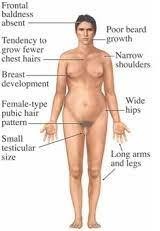A nurse assesses a group of clients who have rheumatoid arthritis (RA). Which client would the nurse see first?
Client with a worse joint deformity since the last visit
Client with a red, hot, swollen right wrist
Client who has a puffy-looking area behind the knee
Client who reports jaw pain when eating
The Correct Answer is B
Choice A rationale: While joint deformities are concerning in RA, the immediate attention would be required for an acute, red, hot, swollen joint which could indicate an active inflammatory process.
Choice B rationale: Redness, heat, and swelling in a joint are signs of an acute flare in rheumatoid arthritis and might require urgent intervention to manage the inflammation.
Choice C rationale: Puffy-looking areas behind the knee might indicate joint involvement but might not require immediate attention as much as an acutely inflamed joint.
Choice D rationale: Jaw pain while eating can be a symptom of TMJ involvement in RA, but an acutely inflamed joint would generally take precedence.
Nursing Test Bank
Naxlex Comprehensive Predictor Exams
Related Questions
Correct Answer is C
Explanation
Choice A rationale: A client with nausea, vomiting, and abdominal pain may have gastroenteritis, food poisoning, or appendicitis, which are not directly related to the eyes.
Choice B rationale: A client with chest tightness and heartburn may have gastroesophageal reflux disease (GERD), angina, or myocardial infarction (MI), which are also not associated with the eyes.
Choice C rationale: A client with facial drooping and left-sided weakness may have a stroke, which is a medical emergency that requires immediate attention. An eye examination can help detect signs of stroke, such as pupil asymmetry, visual field defects, or eye movement abnormalities. A stroke can cause permanent brain damage or death if not treated promptly.
Choice D rationale: A client with fatigue, fever, and productive cough may have a respiratory infection, such as pneumonia or tuberculosis, which are unlikely to affect the eyes unless there is a systemic complication.
Correct Answer is A
Explanation
Choice A rationale: Cri du chat syndrome involves a high-pitched cry in infants and other distinct physical and developmental features, but it doesn't present with the described symptoms.
Choice B rationale: Klinefelter syndrome, characterized by an extra X chromosome (XXY) in males, typically presents with small testicles, gynecomastia (enlarged breast tissues), sexual dysfunction, and altered body proportions, such as long legs and a shorter trunk, aligning with the client's symptoms.
Choice C rationale: Patau syndrome (Trisomy 13) manifests with severe developmental issues, facial abnormalities, and other physical malformations, but the described symptoms are not typically associated with this syndrome.
Choice D rationale: Turner syndrome involves females with a missing or partially missing X chromosome (45, X), resulting in specific physical features and medical problems not consistent with the described symptoms in a male client.

Whether you are a student looking to ace your exams or a practicing nurse seeking to enhance your expertise , our nursing education contents will empower you with the confidence and competence to make a difference in the lives of patients and become a respected leader in the healthcare field.
Visit Naxlex, invest in your future and unlock endless possibilities with our unparalleled nursing education contents today
Report Wrong Answer on the Current Question
Do you disagree with the answer? If yes, what is your expected answer? Explain.
Kindly be descriptive with the issue you are facing.
